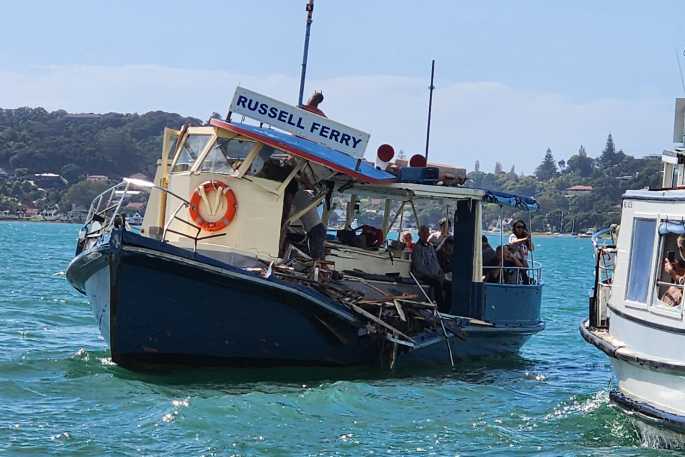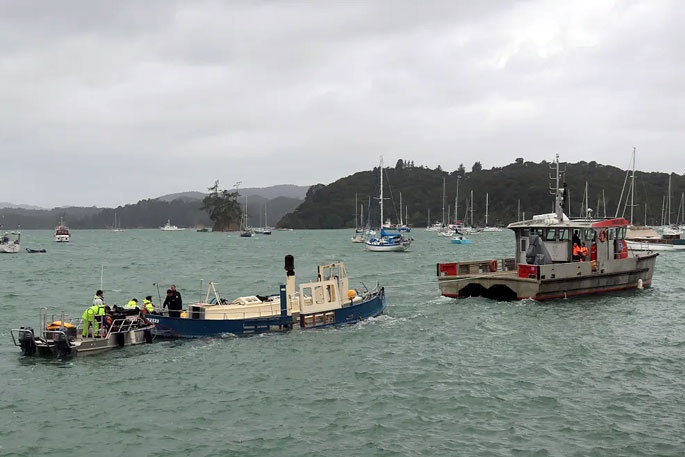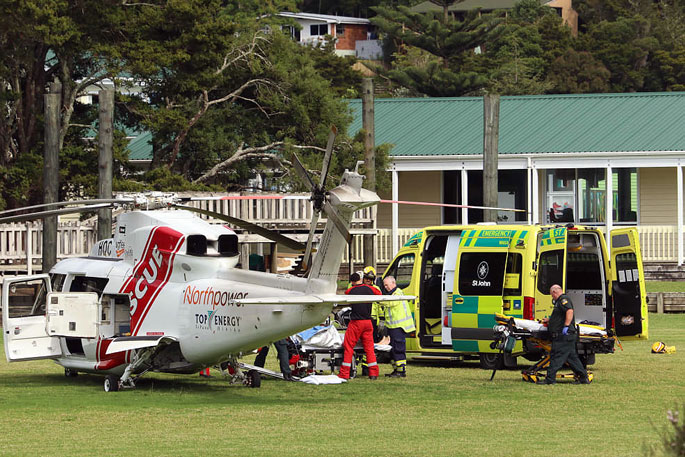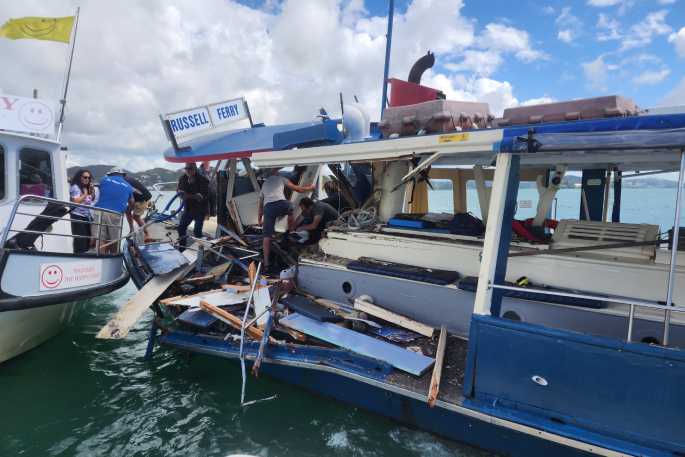A failure of both skippers to keep proper watch led to a "catastrophic" collision in the Bay of Islands which left one man with critical injuries and sank a historic ferry, a new report has found.
On 13 April 2023, Waitere, also known as the Blue Ferry, was starting its regular run from Russell to Paihia when it was hit side-on by a powerboat travelling at more than 20 knots.
She was also a fixture on Tauranga Harbour until the harbour bridge came along in 1988.
The ferry's wheelhouse was destroyed in the impact with the skipper suffering multiple injuries, including a broken spine.
None of the 19 passengers on board was seriously injured, though one was thrown into the water and a number of children suffered lasting psychological trauma.
The skipper and passenger on the power boat, Onepoto, were unhurt.
The Waitere, an 80-year-old wooden vessel, suffered what the Transport Accident Investigation Commission (TAIC) described as catastrophic damage and sank about an hour later.
It was salvaged but deemed irreparable.
TAIC's final report, released this Thursday, found both vessels failed to observe good watchkeeping practice.
"Every skipper is human and no skipper can be sure everything is fine on another vessel," chief investigator of accidents Naveen Kozhuppakalam said.
"When vessels are getting closer, regardless of who should give way, both skippers must look, listen, and think about risk of collision. They must keep doing that until both vessels are getting further apart."
"Almost certainly, neither skipper kept a proper watch. Both did eventually see the other vessel, but too late to take avoiding action."
 Another ferry comes to the rescue of the badly damaged Waitere. The wheelhouse and port side bore the brunt of the collision with a high-powered sports fishing boat. Photo:Elliot Bexon.
Another ferry comes to the rescue of the badly damaged Waitere. The wheelhouse and port side bore the brunt of the collision with a high-powered sports fishing boat. Photo:Elliot Bexon.
In this case, it was the Onepoto that should have given way, Kozhuppakalam said.
"This was a crossing situation. Onepoto was heading north at about 20.5 knots and Waitere was heading southwest at about 6 knots on the right side of Onepoto, so under the rules, Onepoto should have given way to Waitere," he said.
"Speed is a crucial part of this. Every skipper should ensure their speed gives them time to keep track of the risks and be able to stop in a safe distance if required."
"The commission found Onepoto was moving at 20.5 knots while its skipper was distracted by an engine alarm. It's important to attend to an engine alarm, but it's more important to avoid a collision. If Onepoto's speed had been appropriately slower, it's very likely the collision would have been avoided or its consequences diminished."
While there is no speed limit in the area where the collsion occurred, vessels within 50m of each other must not travel faster than 5 knots, according to Northland Regional Council maritime rules.
The report also found shortcomings in Waitere's safety management system, vital for any passenger vessel.
Risks to passengers overlooked by the ferry operator included the risk of the sole-charge master being incapacitated, which was "an unfortunate consequence" of this collision.
 The salvaged ferry Waitere is towed to Ōpua for inspection by Maritime New Zealand investigators. Photo: Peter de Graaf.
The salvaged ferry Waitere is towed to Ōpua for inspection by Maritime New Zealand investigators. Photo: Peter de Graaf.
Passengers had to take control of the vessel and summon help.
"The operator's safety plan also didn't detail watchkeeping procedures and keeping a good lookout, and it contained ambiguous, irrelevant and inaccurate information."
However, Kozhuppakalam noted that the regulator, Maritime New Zealand, did not detect those problems before the crash.
Since then, Maritime NZ had "renewed its focus" and engaged more with operators about certification and auditing of their Maritime Transport Operator Plans.
Kozhuppakalam said there was no need for TAIC to make a new recommendation about watchkeeping.
Maritime NZ already promoted good watchkeeping and lookout practices via safety audits, guidance publications, and prosecution when the rules were breached.
 The ferry’s critically injured skipper is loaded onto the Northland Rescue Helicopter at Paihia School. Photo: Peter de Graaf.
The ferry’s critically injured skipper is loaded onto the Northland Rescue Helicopter at Paihia School. Photo: Peter de Graaf.
Maritime NZ completed its own investigation of the collision, which led to Onepoto skipper James Thomson, 49, of Auckland, being charged with dangerous operation of a vessel.
He pleaded guilty and in July this year was ordered to pay emotional harm reparation of $128,000, plus $3200 for consequential losses, to the victims.
The ferry skipper was paralysed from the waist down and requires full-time care.
Waitere was built in Picton in 1944, originally for transporting passengers between Tauranga and Mt Maunganui.
Onepoto is a US-built Boston Whaler with twin Mercury 300-horsepower outboards.
The purpose of TAIC investigations is not to assign blame, but to come up with recommendations or changes to prevent similar accidents happening again.



0 comments
Leave a Comment
You must be logged in to make a comment.